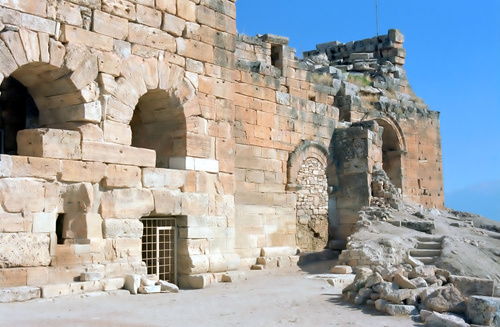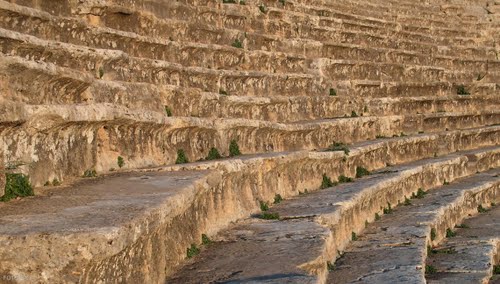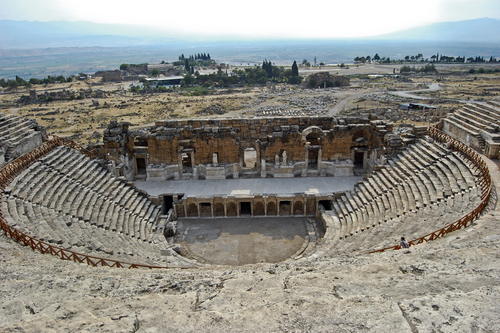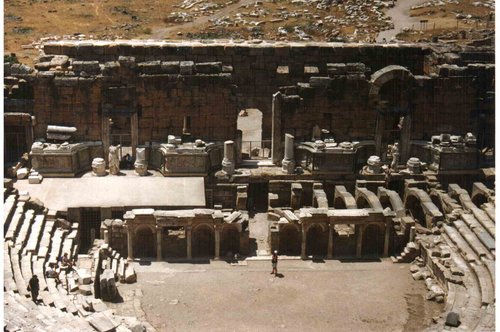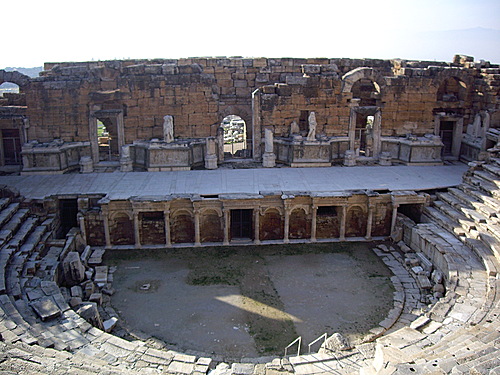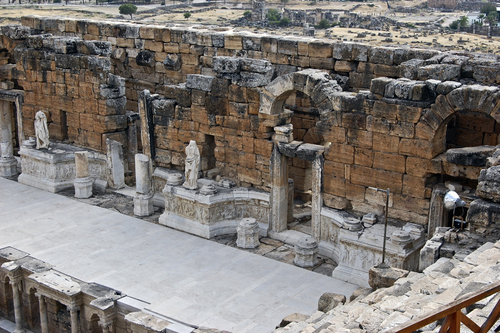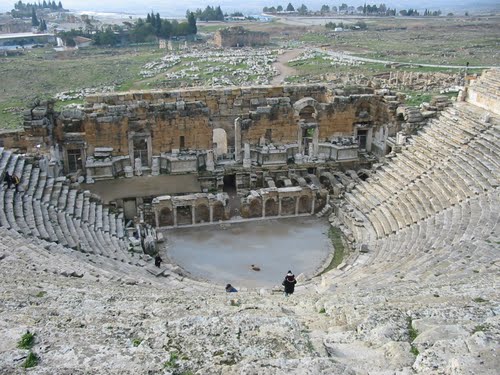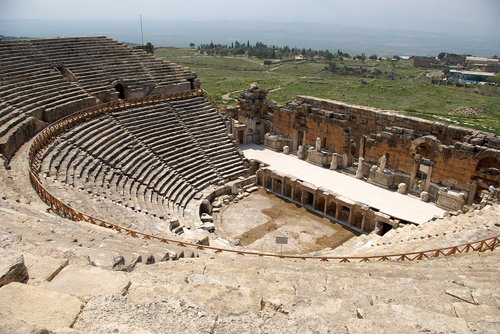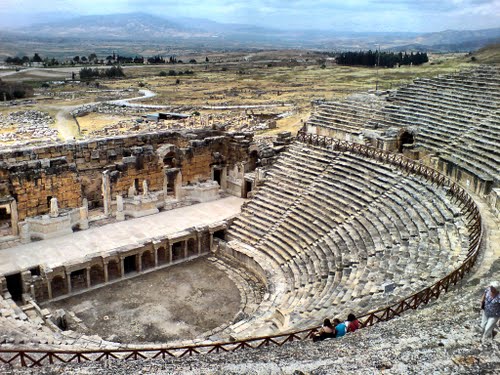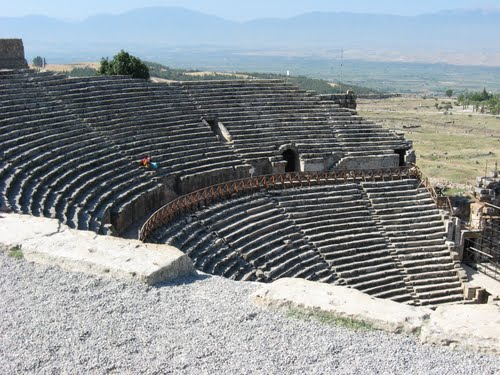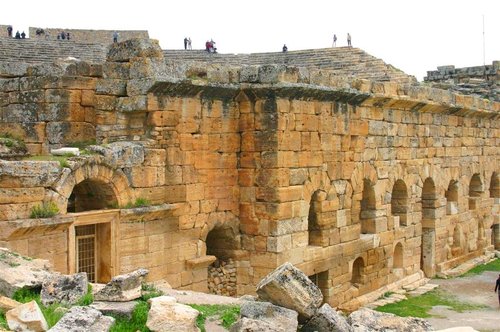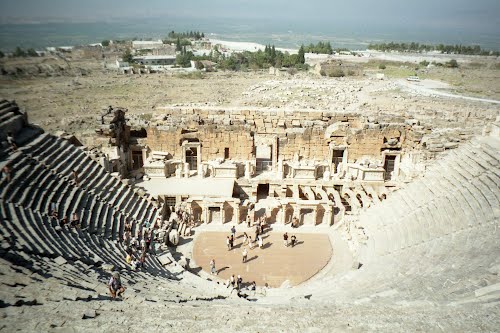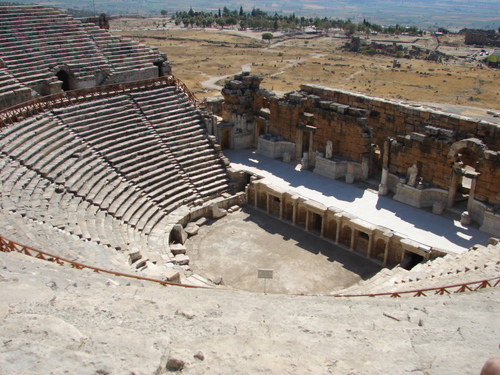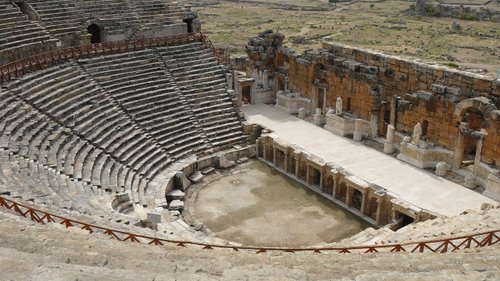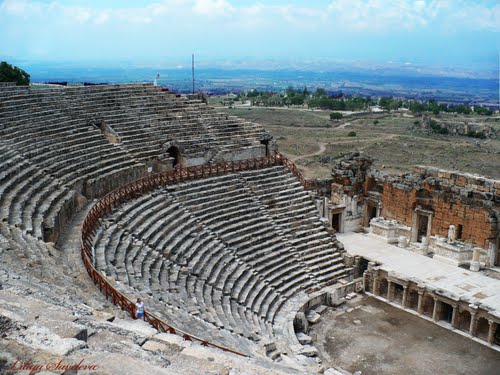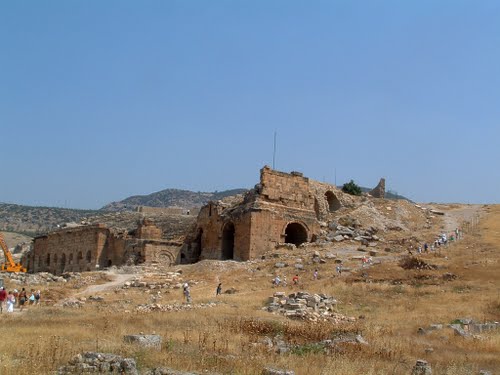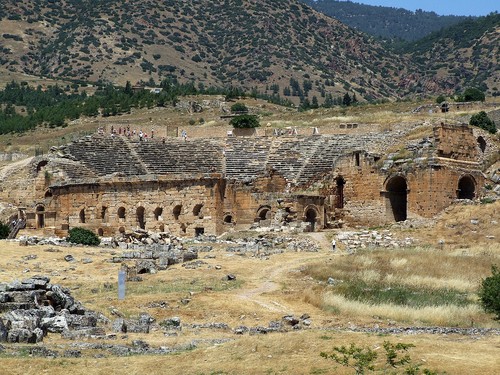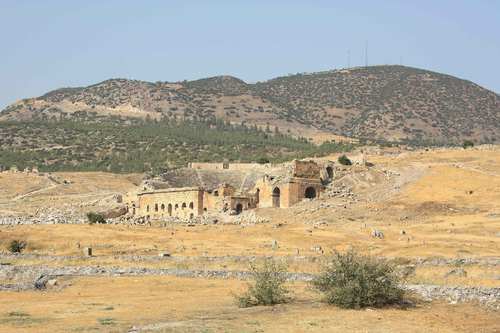The Theatre was probably constructed under the reign of Hadrian after the earthquake of 60 AD. The facade is 300 feet long (92 m), the full extent of which remains standing. In the cavea there are 50 rows of seats divided into 7 parts by 8 intermediate stairways. The diazoma, which divided the cavea into two, was entered by two vaulted passages (the vomitoria). There is an Imperial loge at the middle of the cavea and a 6-foot-high (1.83 m) wall surrounding the orchestra.
During the reign of Severus at the beginning of the 3rd century, the old scaenae frons was replaced by a new, more monumental one, organized on three storeys and flanked by two imposing side entry buildings. Sculptural reliefs, displaying mythological subjects, were placed on the different storeys, while dedicatory inscriptions ran along the entablatures. The transformation was outstanding due to the size of the structures, the high quality of workmanship and materials employed.
The auditorium was rebuilt as well, substituting the ancient limestone seats with others in marble, and realizing a high podium on the orchestra in order to adapt the building to the organization of venationes and gladiator schools.
An earthquake in Hierapolis in the 7th century caused the collapse of the entire building as well as the ultimate abandonment of the city. Since the 18th century, the monument’s striking ruins have become a recurrent theme in European travellers descriptions and engravings.
Septimius Severus is portrayed in a relief together with his wife Julia Domna, his two sons Caracalla and Geta, and the god Jupiter. In AD 352, the orchestra was probably transformed into an arena for aquatic shows, which had become fashionable. The stage, which is 12 ft high (3.66 m), had 5 doors and 6 niches. In front of these there were 10 marble columns, decorated with alternate rectilinear and curved segments. The wall behind the scene was decorated with three rows of columns one behind another. The columns on the front row do not have grooves and stood on octagonal bases.
The auditorium consisted of stacked seating with a capacity of 15,000 and was bisected by the main aisle. It featured an imperial box. The lower part originally had twenty rows and the upper part twenty five, but only thirty rows altogether have survived. The auditorium is segmented into nine aisles by means of eight vertical passageways with steps. The proscenium consisted of two stories with ornately decorated niches to the sides. Several statues, reliefs (including depictions of Apollo, Dionysus, and Diana), and decorative elements have been excavated by the Italian archaeological team and can be seen in the local museum.
The theatre has been the object of important restorations between 2004 and 2014.

